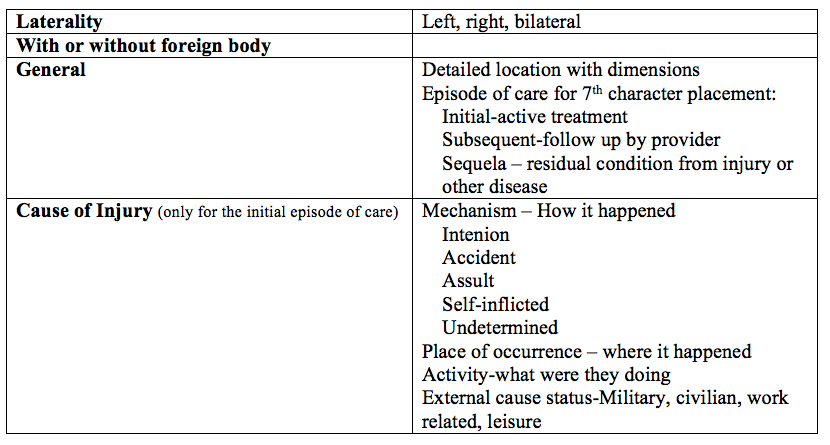Spring is here! With the weather getting warmer it is a great time for short sleeve shirts, shorts and flip flops. Unfortunately, this leaves our bare feet, knees and elbows more vulnerable to lacerations. Let’s take a moment to power up your knowledge in laceration coding.
Making sure the claim is paid by the payer is always a priority. Ensuring that the correct documentation is being captured to support the code is also high on the list as well. Here are 8 items of laceration repairs needed within the documentation: location, length, layers, decontamination (including foreign material removed), tissue management, exploration of wound and contiguous structures, anesthesia technique, and repair of underlying structures.
Example of documentation for a simple scalp repair:
“After cleansing with betadine, repaired single-layer scalp wound, 8.4 cm, with 14 4-0 prolene sutures under local anesthesia. No foreign material removed; no repair of underlying structures or tissue management required. Wound and surrounding structures…”
Be sure NOT to over-code for bandaging a skinned knee. The following is an example encounter for an established patient with a skinned left knee:
”Provider examines the knee, cleans it with warm soapy water, and applies gauze with sterilized bandages.”
Do not report a simple repair with the E/M. In this case you only need an E/M code to cover the encounter. If the provider uses adhesive strips or bandaging, then the E/M code will be sufficient to cover the service.
Let’s all be honest, we love flip flops but they are really problematic! Wearing flip-flops can cause problems ranging from stubbed toes and cuts to overuse injuries such as foot stress fractures. Researchers have speculated that an altered gait could result in pain from the foot all the way up into the hips and lower back.
Our feet become vulnerable when flip-flops are worn excessively. Not only do the arches of the feet suffer, but our ankle becomes vulnerable to sprains without proper sole support. Also, your bare feet have a greater chance to come into contact with broken glass, nails, and even fungus!
Flip flops can also lead to injuries other than our feet. Lower back pain and herniated disks, knee pain and meniscus tears, plantar fasciitis, bunions or Hammertoes are all examples of flip flop related injuries. While most flip flops are fairly inexpensive, injuries resulting from long-term wear can result (in worse-case scenarios) in expensive surgeries to repair the damage.
With all lacerations it’s vitally important to capture the documentation that is needed. Here is the list that you can share with your providers for clinical documentation improvement measures.
 Reference used from: Boltz – Supercoder, August 14, 2009 and Supercoder.com, April 10, 2017
Reference used from: Boltz – Supercoder, August 14, 2009 and Supercoder.com, April 10, 2017
